How To Change A R-2800
Wed Oct 15, 2008 8:43 pm
318th FG 7th AF Saipan Aug 1944
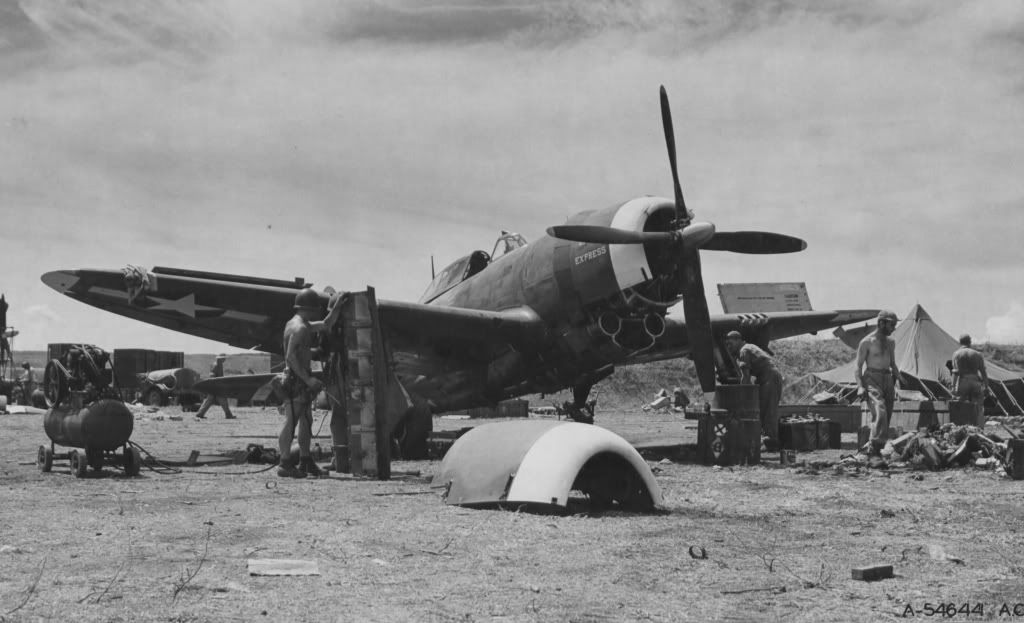
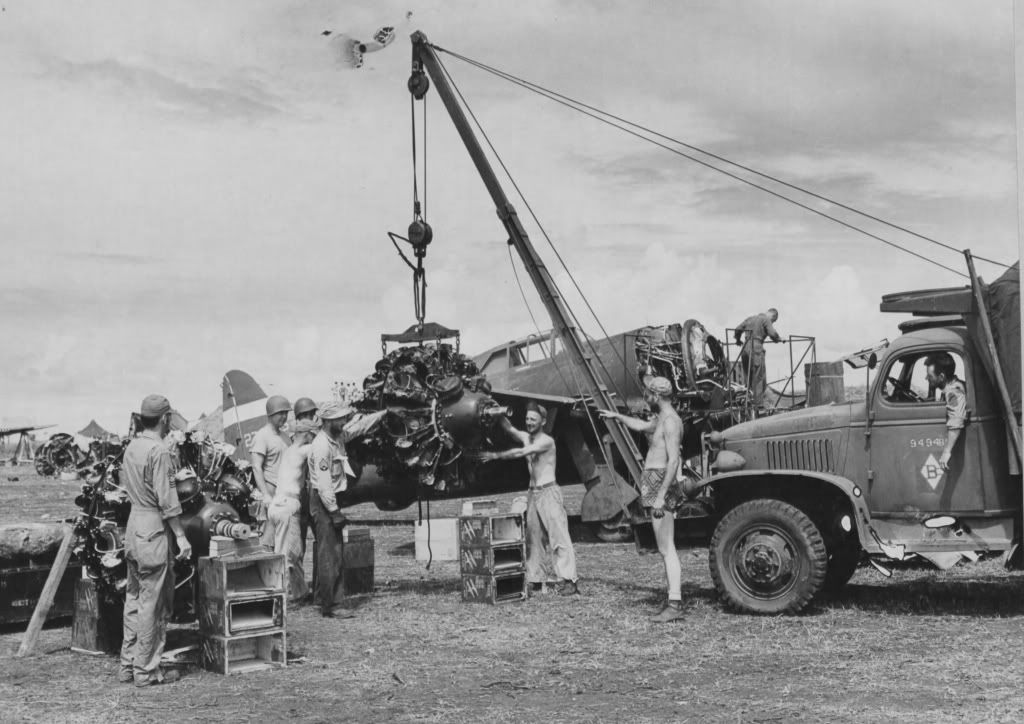
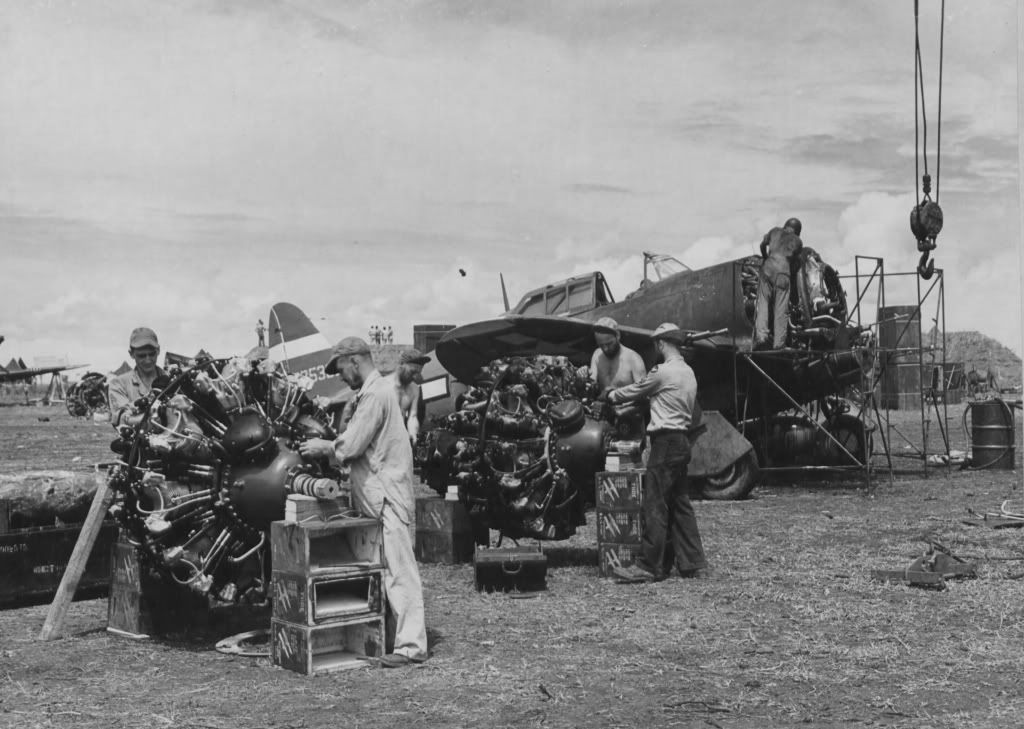
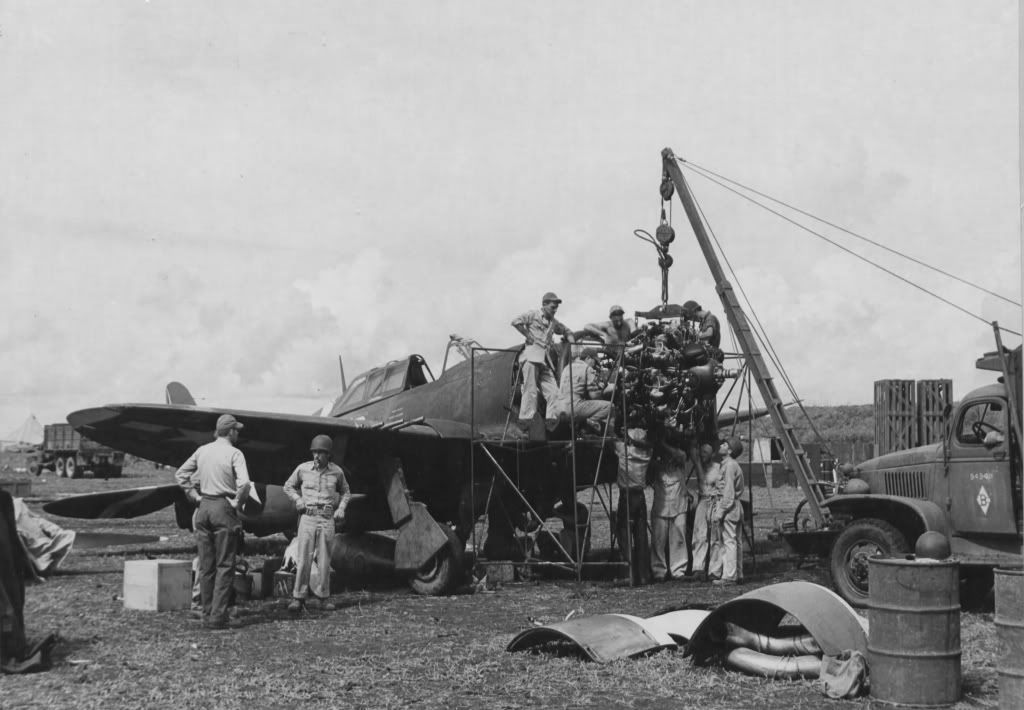
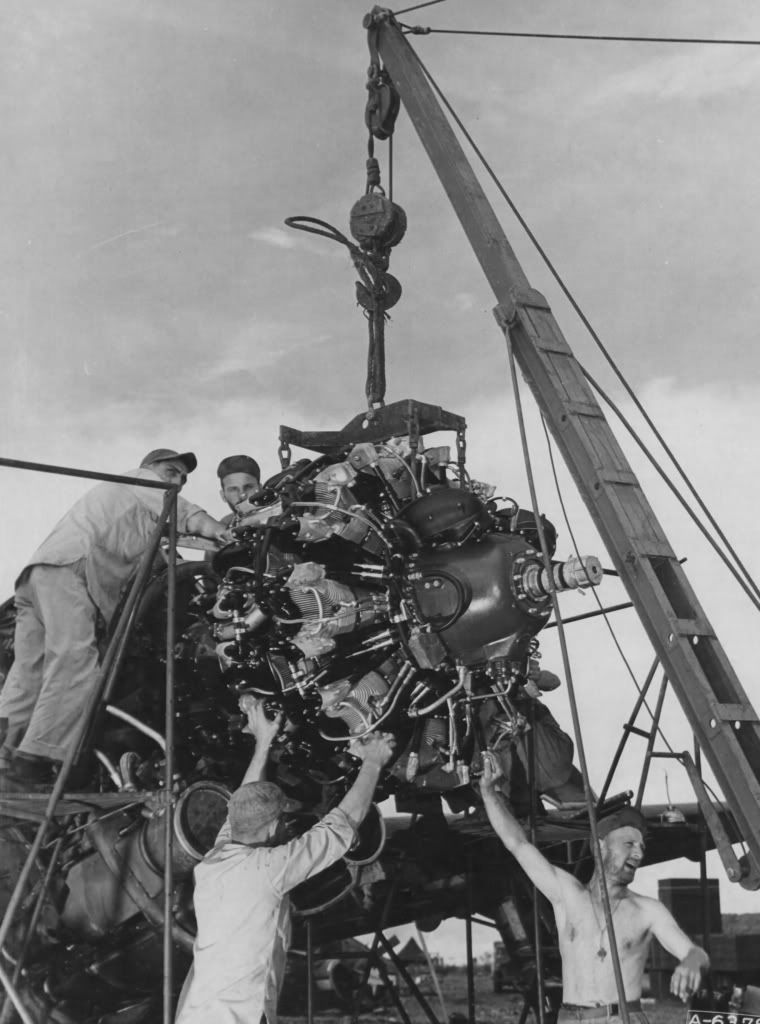
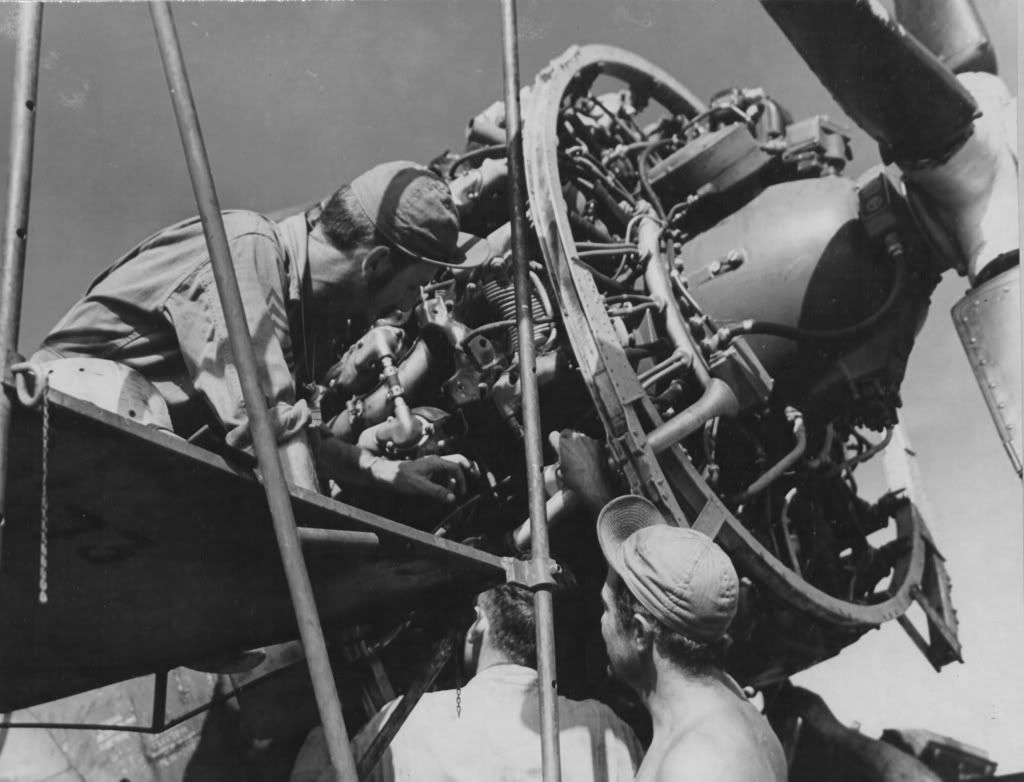
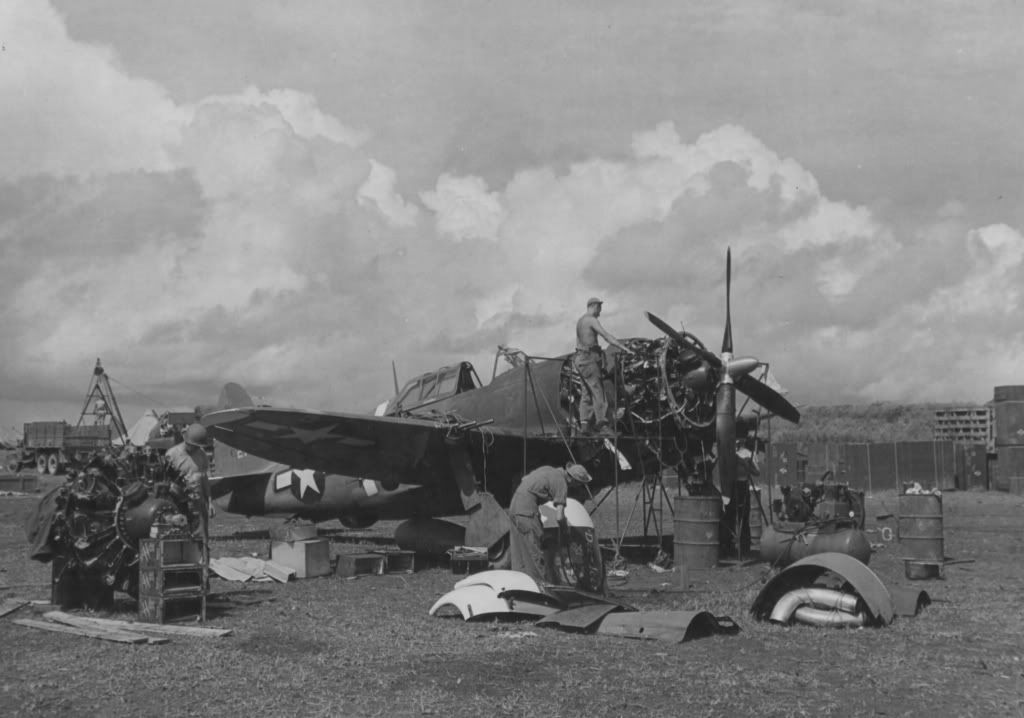
and next....................
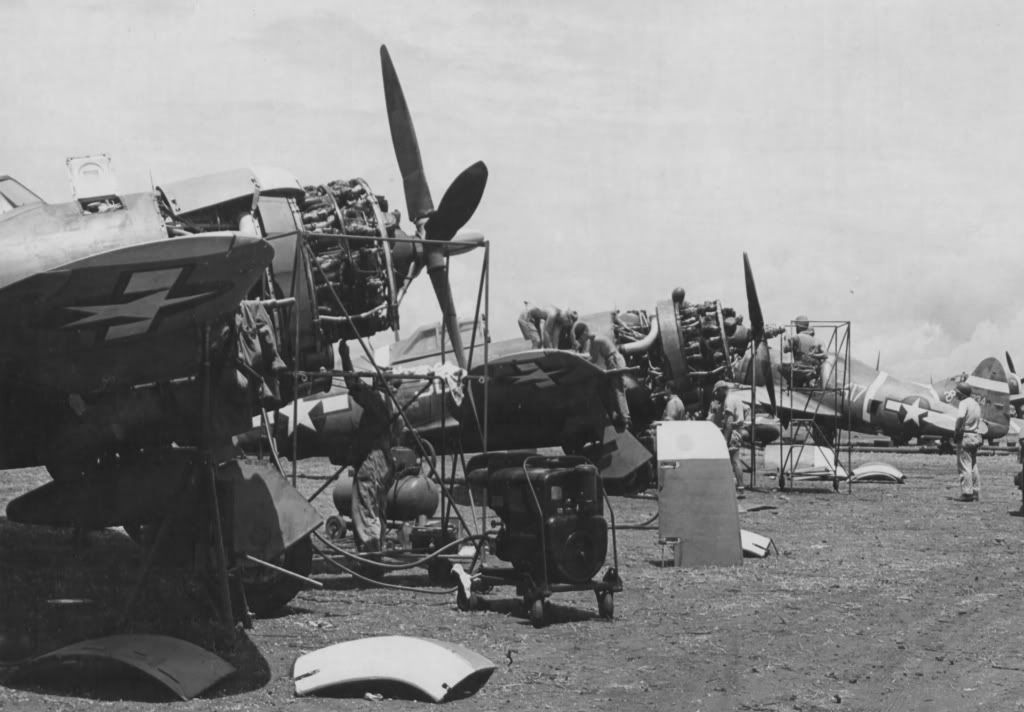







and next....................

Wed Oct 15, 2008 8:50 pm
I wonder if they had any tool or hardware accountability?
Wed Oct 15, 2008 8:58 pm
kenlyco wrote:I wonder if they had any tool or hardware accountability?
Yea, it was on Uncle Sam's Account.
Rich
Wed Oct 15, 2008 8:58 pm
How many hours would they expect to get out of one of those engines? This was the squadran that my dad was an armorer in and they were lanched from the USS Manila Bay on about June 25th. Of course that doesn't mean that they were zero time engines then. Hugh
"hey bob where does this wire and little hose go again?
Wed Oct 15, 2008 9:20 pm
Wed Oct 15, 2008 9:30 pm
51fixer wrote:kenlyco wrote:I wonder if they had any tool or hardware accountability?
Yea, it was on Uncle Sam's Account.
Rich
You the box when you yell attention and the box salutes you....
Lynn
???
Wed Oct 15, 2008 9:48 pm
Anyone notice the guy in the shorts in the first photo?? 
eng change
Wed Oct 15, 2008 9:51 pm
Ok its a razor back its a R 2800-53W,
Time to change depends if you have a quick change engine all built up and ready to go. I'll guess three guys two days. The engine's come without all the acessy generator starter etc.
If you have to take off all that stuff and put it on the new engine then I'll guess four guys four days thats eight hours.
Time in service again depends on a bunch off stuff like how hard you run the engine, how sandy the airport is etc.
The book says 1500 to 2500 hours, but oil use is a pretty good gauge to go by. The airplane has a 40 gallon oil tank. A new engine would spit out I'll guess bout 3 gallons an hour. When it gets up to 7 or 8 an hour I'd start keeping a close eye on it.
The W means wet, which is war power, which means theres a tank that has a mix of alchol and water. When you hit the war power it really tears up the engine. You could take a new engined airplane out get into a bad fight and be changing the engine the next day.
So it all depends.
Time to change depends if you have a quick change engine all built up and ready to go. I'll guess three guys two days. The engine's come without all the acessy generator starter etc.
If you have to take off all that stuff and put it on the new engine then I'll guess four guys four days thats eight hours.
Time in service again depends on a bunch off stuff like how hard you run the engine, how sandy the airport is etc.
The book says 1500 to 2500 hours, but oil use is a pretty good gauge to go by. The airplane has a 40 gallon oil tank. A new engine would spit out I'll guess bout 3 gallons an hour. When it gets up to 7 or 8 an hour I'd start keeping a close eye on it.
The W means wet, which is war power, which means theres a tank that has a mix of alchol and water. When you hit the war power it really tears up the engine. You could take a new engined airplane out get into a bad fight and be changing the engine the next day.
So it all depends.
???
Wed Oct 15, 2008 10:02 pm
Ya but the guy wrenching in the close-up is a M/Sgt 
Maybe he lost all his cloths in a Kamikaze attack
Maybe he lost all his cloths in a Kamikaze attack
Re: ???
Wed Oct 15, 2008 10:04 pm
Jack Cook wrote:Ya but the guy wrenching in the close-up is a M/Sgt
Maybe he lost all his cloths in a Kamikaze attack
Yeah But he's got his helmet on!
Wed Oct 15, 2008 10:17 pm
Are those milk crates or similar they're resting the engines on?
.50 ammo boxes
.50 ammo boxes
Re: ???
Thu Oct 16, 2008 12:09 am
Or a poker game.Good eye Jack.Jack Cook wrote:Ya but the guy wrenching in the close-up is a M/Sgt
Maybe he lost all his cloths in a Kamikaze attack
Thu Oct 16, 2008 1:54 am
Or like Captain Yossarian, he just didn't feel like wearing anything... 
Great pics! It's amazing to see the primitive conditions these guys worked under, compared to today's shops where the planes are pampered and primped like movie stars (not that I'm complaining..they deserve it!)
SN
Great pics! It's amazing to see the primitive conditions these guys worked under, compared to today's shops where the planes are pampered and primped like movie stars (not that I'm complaining..they deserve it!)
SN